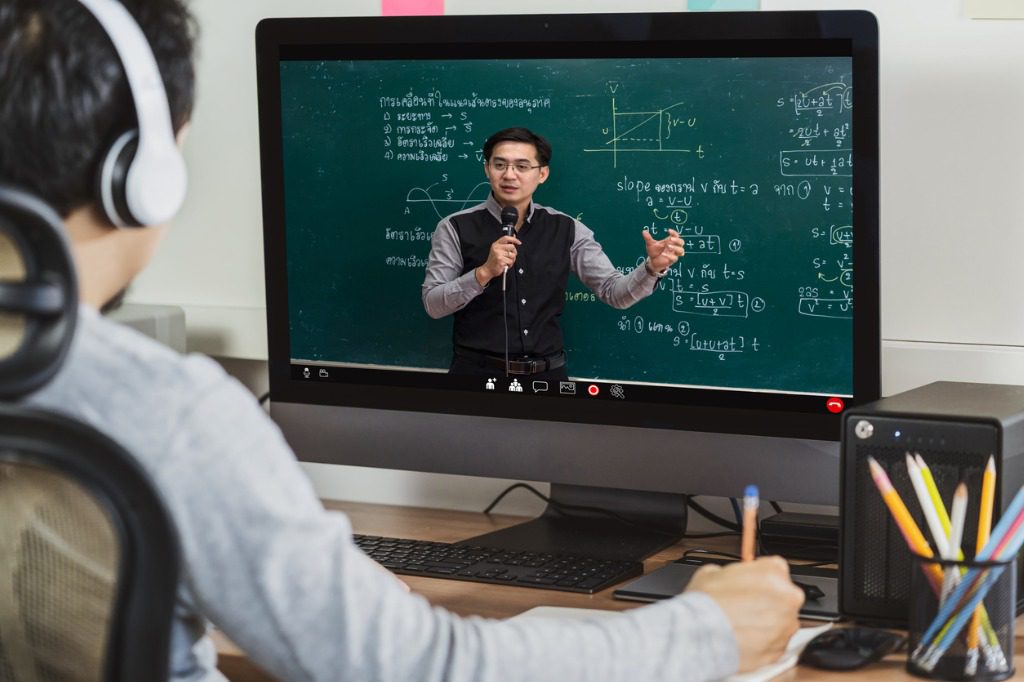This is an excerpt from our ebook "How to Create Great Learning Experiences and Optimize Education Administration with Technology." You can read the other excerpts below:
- Why Having a Unified Platform for Online Learning Matters
- 3 Ways Technology Can Optimize Education Administration
For many years, educators and trainers have struggled to ensure digital assessment is robust and fair. Concerns about cheating, when learners are away from the watchful eyes of invigilators, have long been a sticking point when it comes to online assessment.
Even though only a third use some form of invigilators to prevent online cheating, 9 in 10 educators believe learners are more likely to cheat online than in person.
But part of making learning accessible is to make assessment digital. Assessment needs to move into the digital age. The good news is that evolving technologies such as artificial intelligence (AI) can be used by invigilators to detect when a test taker’s behavior is indicative of cheating and to find instances of plagiarism.
AI and machine learning will also be increasingly used to automate tedious tasks for educators and trainers so they can spend their time truly engaging with students and maximizing the interactive experience.
Algorithms can determine where a learner is strongest and where they need either more time, more practice, or a different approach to curriculum delivery.

An algorithm, complementing a teacher’s assessment and not replacing it, can tell if a math student may be very strong in calculus but not as strong in trigonometry. Analytics can show if the level of mastery on a particular subject may be a result of a student spending less time participating in lessons, reading study guides, or engaging with other learners.
An algorithm can detect this and modify the content and how it is delivered, such as by using different question styles to assist the learner. While educators have been doing this since the advent of the modern education system, technology can assist them with detecting issues in an intuitive way so they can assist learners faster.
AI and machine learning can also help with marking assessments and even developing basic question-answer pairs for routine quizzes.
Virtual teaching assistants, like the chatbots we see at online stores, can help answer common student questions on material or the logistics of the course. Instead of messaging the teacher to ask when an assignment is due or when a test is scheduled, a bot can answer that, freeing the teacher to work on more important tasks.
Personalized Learning Journeys
In his well-regarded TED talk, educational leader Sir Ken Robinson, describes how education systems push students through in age-group batches with the expectation that they all, more or less, learn in the same ways and at the same pace. Yet, it’s clear that this supposition is incorrect.
Technology allows us to not only assess students but to design personalized curricula for each student. We will move away from a world of linearly developed courses and create a curriculum where students engage in personal learning journeys.

Technology will enable micro-learning – where learners will be able to work at their own pace and receive guidance as they need it from increasingly sophisticated and available chatbots and other automated assistants.
Learning will not only increasingly leverage micro-modules, but it is also becoming more and more mobile. 3 in 4 college students want to use their mobile devices as part of the e-learning process. Students want to view their lectures or read their study materials not only when they are in front of their computers but when they are waiting in line at the bank or other moments they can steal throughout their day.
We will also see gamification used more and more to motivate learners using the same techniques employed in games to maintain attention. Researchers have found that using the sorts of techniques employed by game designers in educational design can deliver better learning outcomes and better student motivation.
Looking for more insights into how to help students learn efficiently? Read the full ebook here!



